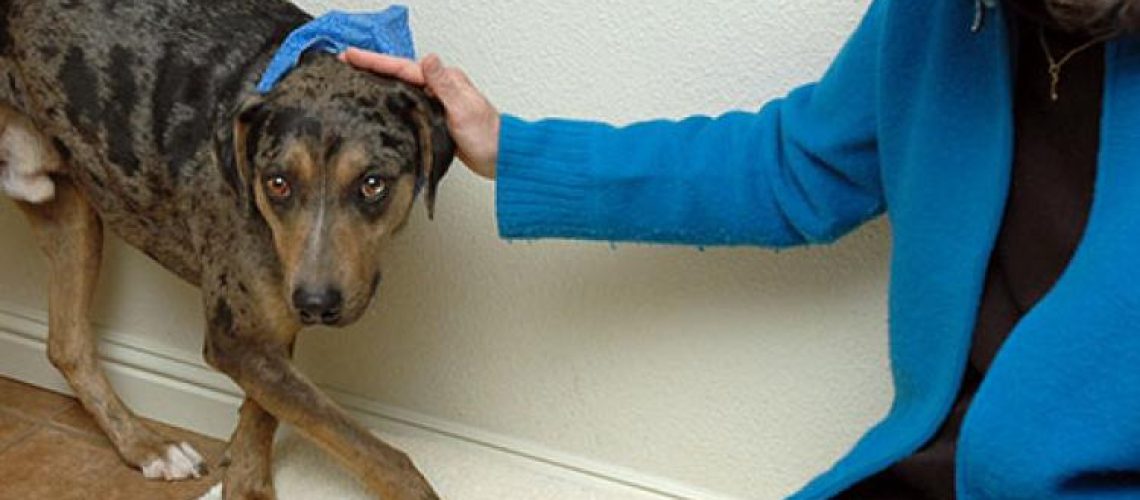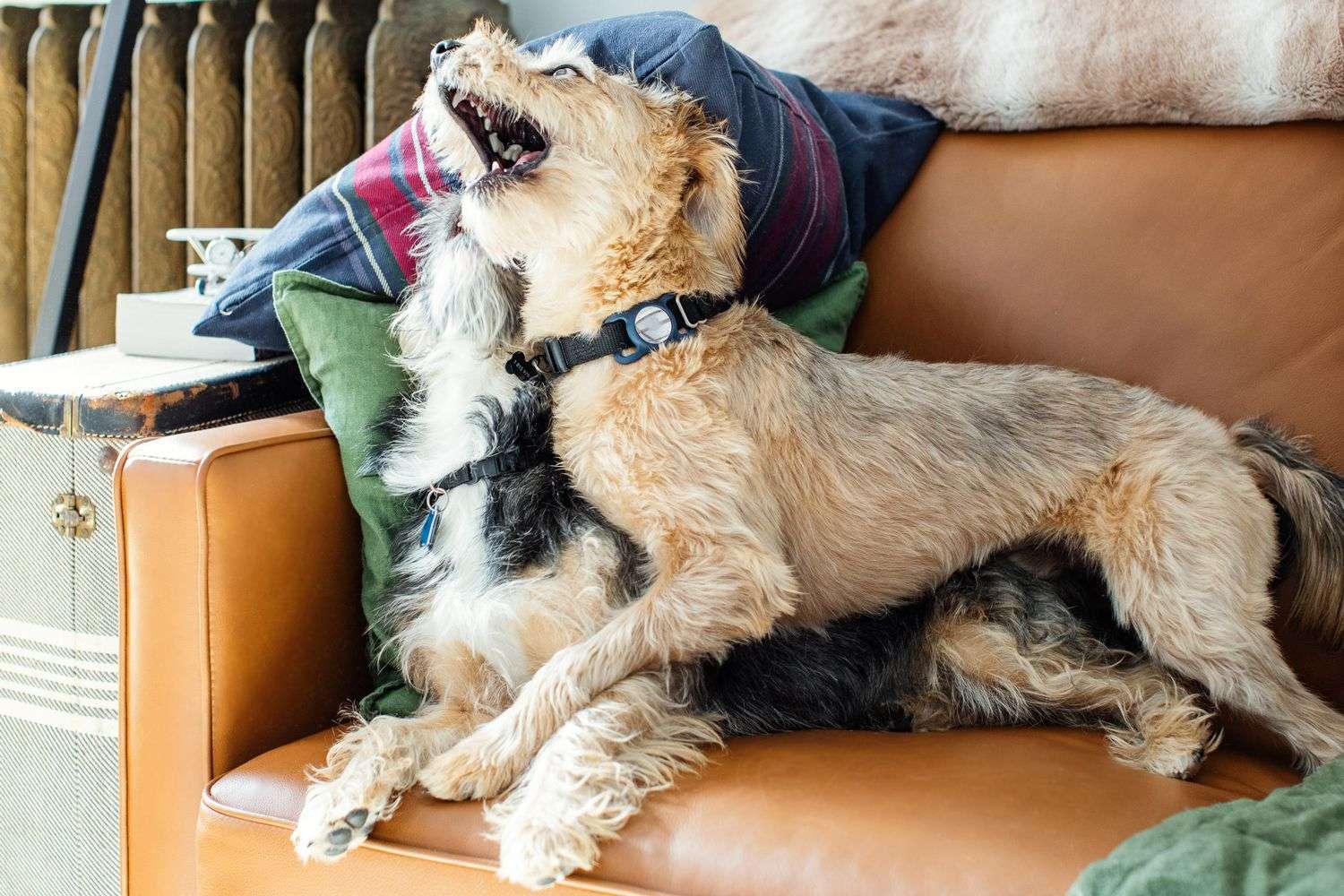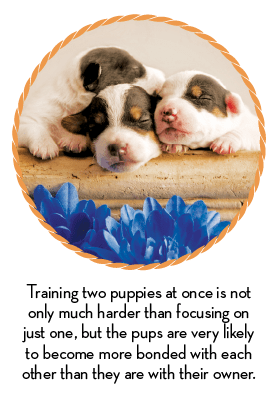Approaching a fearful, shy, or aggressive dog can be challenging. In this guide, we will provide you with effective strategies to safely and confidently interact with these types of dogs.
Key Takeaways:
- Patience and understanding are key when approaching a fearful, shy, or aggressive dog.
- Always approach the dog calmly and slowly to avoid triggering any further fear or aggression.
- Use positive reinforcement techniques to help build trust and confidence in the dog.
- Seek professional help or guidance from a certified dog trainer or behaviorist if needed.
- Respect the dog's boundaries and never force them into uncomfortable situations.
Signs of Fear, Shyness, or Aggression in Dogs
Understanding Your Dog's Behavior
When it comes to our furry friends, it's important to pay attention to their body language and behavior. Dogs may exhibit signs of fear, shyness, or aggression for various reasons. Some common signs of fear include trembling, cowering, tail tucking between the legs, and ears pinned back. Shy dogs may avoid eye contact, hide behind objects or people, and exhibit submissive behaviors like rolling onto their backs. On the other hand, aggressive dogs may growl, bare their teeth, lunge forward, or even bite.
Why It's Important to Recognize These Signs
Recognizing these signs is crucial for both your safety and the well-being of the dog. Fearful or shy dogs may become aggressive if they feel threatened or cornered. By understanding these signs early on, you can take appropriate measures to prevent any potential harm. It's essential not to ignore or dismiss these behaviors as they can escalate over time if not addressed properly.
List of Common Signs:
- Trembling
- Cowering
- Tail tucked between legs
- Ears pinned back
- Avoiding eye contact
- Hiding behind objects/people
- Rolling onto their backs (submissive behavior)
- Growling
- Baring teeth
- Lunging forward
By being aware of these signs and understanding what they mean, you can better communicate with your dog and create a safe environment for everyone involved.
The Importance of Approaching Fearful, Shy, or Aggressive Dogs with Caution
The Risks of Mishandling Fearful or Aggressive Dogs
Approaching fearful or aggressive dogs without caution can lead to dangerous situations for both humans and the dogs themselves. Fearful dogs may feel threatened and react defensively, potentially causing harm to those around them. Aggressive dogs, if approached inappropriately, can become even more aggressive and pose a significant risk.
Why Patience and Understanding Are Key
When encountering a fearful, shy, or aggressive dog, it's important to approach with patience and understanding. Rushing or forcing interactions can escalate the situation and make it more challenging to gain the dog's trust. By taking the time to assess their behavior and responding appropriately, you can create a calmer environment for both yourself and the dog.
List of Tips for Approaching Fearful or Aggressive Dogs:
- Move slowly and avoid sudden movements.
- Speak softly and use a calm tone of voice.
- Avoid direct eye contact as it can be seen as threatening.
- Allow the dog to approach you on their terms.
- Offer treats or toys as positive reinforcement.
- Give the dog space if they seem uncomfortable or scared.
- Do not punish or yell at the dog; this will only increase fear or aggression.
Remember, each dog is unique, so it's essential to approach them with an open mind and respect their boundaries. Building trust takes time, but with patience and gentle techniques, you can help fearful or aggressive dogs feel more at ease.
Creating a Calm and Safe Environment for Dogs
Creating a calm and safe environment is essential for the well-being of dogs. One way to achieve this is by providing a designated space for the dog that includes comfortable bedding, toys, and access to water. This space should be free from any potential hazards or stressors such as loud noises or excessive foot traffic. Additionally, it is important to establish a consistent routine for feeding, exercise, and playtime to help dogs feel secure and reduce anxiety.
Implementing calming techniques:
- Using soothing music or white noise machines can help create a peaceful atmosphere.
- Utilizing natural remedies such as pheromone diffusers or herbal supplements can also promote relaxation.
- Avoiding sudden changes in the environment or daily routines can prevent unnecessary stress.
Providing mental stimulation:
- Engaging dogs in puzzle toys or interactive games can keep their minds occupied and prevent boredom-related behaviors.
- Incorporating training sessions into their daily routine not only provides mental stimulation but also strengthens the bond between the dog and their owner.
Gentle Ways to Gain the Trust of Fearful or Shy Dogs
Gaining the trust of fearful or shy dogs requires patience, understanding, and gentle approaches. It is crucial to respect their boundaries and allow them to approach at their own pace. Here are some strategies that can help build trust:
Building trust through positive reinforcement:
- Rewarding small steps of progress with treats or praise can encourage fearful dogs to associate positive experiences with their human caretakers.
- Using a calm and soothing voice when interacting with the dog can help them feel more at ease.
Creating a safe space:
- Providing a quiet and secure area where the dog can retreat to when feeling overwhelmed can give them a sense of control and security.
- Avoiding sudden movements or loud noises around the dog can prevent further fear or anxiety.
Avoiding Direct Eye Contact with Anxious or Aggressive Dogs
Direct eye contact can be perceived as threatening by anxious or aggressive dogs, potentially escalating their behavior. Instead, it is important to use non-confrontational body language and avoid direct eye contact. Here are some techniques to employ:
Redirecting attention:
- Focusing on an object or treat in your hand rather than making direct eye contact can divert the dog's attention away from any potential triggers.
- Moving slowly and calmly while avoiding sudden gestures or actions can help maintain a non-threatening presence.
Using peripheral vision:
- Gently observing the dog through your peripheral vision instead of directly staring at them allows you to monitor their behavior without provoking aggression or anxiety.
- Avoiding prolonged periods of intense eye contact can help alleviate any discomfort the dog may feel.
Non-Threatening Techniques for Approaching Aggressive Dogs
Approaching aggressive dogs requires caution and non-threatening techniques to ensure safety for both humans and animals involved. Here are some strategies to consider:
Maintaining distance:
- Keeping a safe distance from the dog and allowing them space can help prevent further aggression.
- Using objects such as a barrier or umbrella to create a physical barrier between yourself and the dog can provide an added layer of protection.
Using calm body language:
- Moving slowly and avoiding sudden movements can help convey non-threatening intentions.
- Turning your body slightly sideways and keeping your hands relaxed at your sides can signal to the dog that you are not a threat.
Using Positive Reinforcement to Help Fearful or Shy Dogs Overcome Fears
Positive reinforcement is an effective method for helping fearful or shy dogs overcome their fears. By associating positive experiences with previously feared stimuli, dogs can gradually build confidence. Here's how to utilize positive reinforcement:
Identifying triggers:
- Determining what specific situations or objects trigger fear in the dog allows you to focus on desensitizing them through positive experiences.
- Gradually introducing the trigger at a distance where the dog feels comfortable and rewarding them with treats or praise for remaining calm helps create positive associations.
Consistency and patience:
- Consistently exposing the dog to their triggers in controlled environments while providing rewards for desired behavior helps reinforce positive associations over time.
- Acknowledging progress, no matter how small, and being patient throughout the process is crucial for helping fearful or shy dogs overcome their fears.
The Crucial Need to Respect the Personal Space of Dogs
Dogs have their own personal space boundaries, and it is essential to respect these boundaries to maintain their comfort and well-being. Here's why respecting their personal space is crucial:
Understanding body language:
- Learning to recognize signs of discomfort or stress in a dog's body language, such as lip licking, yawning, or ears pulled back, allows you to adjust your behavior accordingly.
- Avoiding actions that invade a dog's personal space, such as reaching over their head or hugging them tightly, can prevent feelings of anxiety or aggression.
Allowing dogs to initiate contact:
- Waiting for the dog to approach you rather than forcing physical interaction respects their personal boundaries and helps build trust.
- Providing opportunities for the dog to retreat if they feel overwhelmed ensures they have control over their personal space.
Steps to Take If a Dog Shows Signs of Aggression While Being Approached
If a dog displays signs of aggression while being approached, it is important to prioritize safety and take appropriate steps. Here are some actions to consider:
Stay calm and avoid confrontation:
- Maintaining a calm demeanor and avoiding any aggressive or threatening behavior yourself can help de-escalate the situation.
- Slowly backing away from the dog without turning your back on them allows you to create distance while still keeping an eye on their behavior.
Seek professional help if necessary:
- If the aggression persists or poses a significant risk, consulting with a professional dog trainer or behaviorist can provide guidance on managing and addressing the issue effectively.
- Avoid attempting to handle aggressive behavior without proper expertise, as it may exacerbate the situation or put yourself at risk.

















